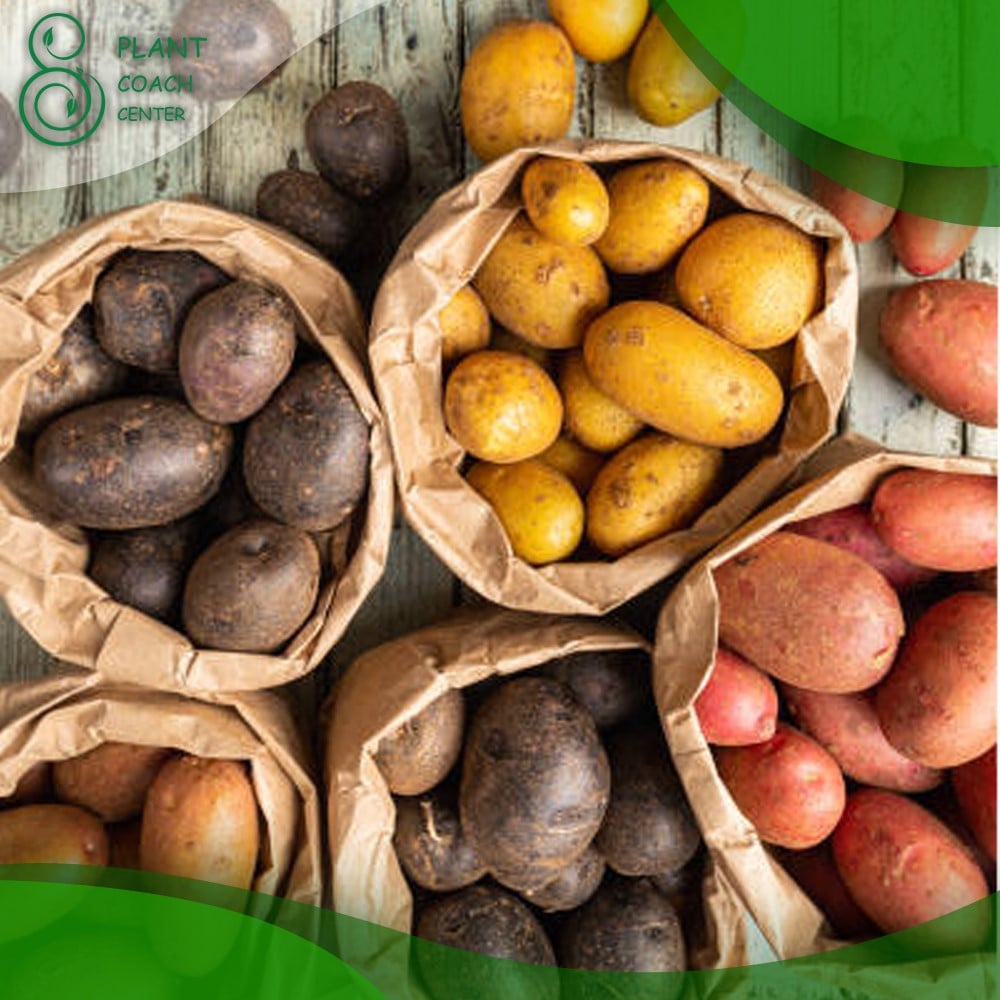Introduction: When to Plant First Early Potatoes
Welcome to the comprehensive guide on planting first early potatoes. In this article, we will delve into the details of when to plant these delightful tubers and provide you with all the information you need to grow a successful crop. Whether you’re a seasoned gardener or a beginner, this guide will equip you with the knowledge to make the most of your potato-growing journey.
Before we dive into the specifics of planting times and techniques, it’s worth mentioning that this article is brought to you by PlantCoachCenter.com, a leading online resource for plant coaching and gardening advice. With expert guidance and personalized support, Plant Coach Center offers valuable insights to help you achieve gardening success. Now, let’s get started on our journey into the world of first early potatoes!
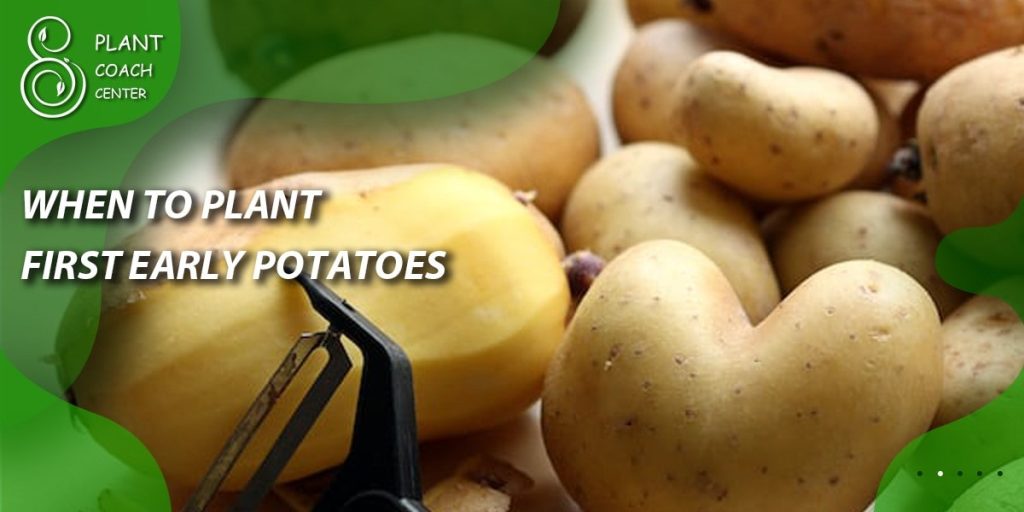
The Basics of First Early Potatoes
First, let’s familiarize ourselves with the fundamentals of first early potatoes. Understanding their characteristics and benefits will set the stage for successful planting.
- What Are First Early Potatoes?
First early potatoes are a particular type of potato that matures quickly, typically within 60 to 90 days after planting. They are renowned for their tender texture, delicate flavor, and thin skins, making them perfect for early season harvests and culinary delights.
- Varieties of First Early Potatoes
There is a wide range of first early potato varieties to choose from, each with its unique qualities. Some popular varieties include “Rocket,” “Arran Pilot,” and “Swift.” Explore the diverse options available and select the varieties that best suit your taste preferences and growing conditions.
- Characteristics and Benefits of First Early Potatoes
First early potatoes offer numerous advantages for gardeners. Here are some key characteristics and benefits to consider:
– Early Harvest: First early potatoes allow you to enjoy your homegrown spuds earlier in the season, providing a sense of satisfaction and anticipation.
– Versatility: These potatoes are suitable for various cooking methods, including boiling, roasting, and steaming, making them a versatile addition to your culinary repertoire.
– Disease Resistance: Many first early potato varieties possess excellent disease resistance, reducing the risk of common potato ailments and ensuring a healthy crop.
– Space Efficiency: First early potatoes can be grown in containers or small garden spaces, making them ideal for urban gardening or limited areas.
Now that we have a solid understanding of first early potatoes, it’s time to explore the factors that influence the optimal planting time.
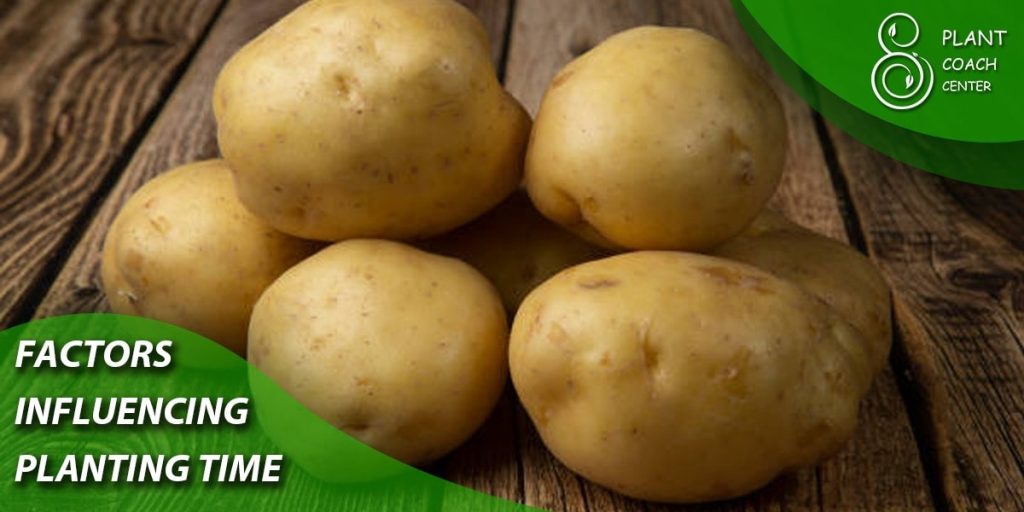
Factors Influencing Planting Time
Several key factors come into play when determining the ideal planting time for first early potatoes. Let’s examine these factors in detail to ensure a successful start to your potato-growing venture.
- Climate and Weather Considerations
The climate in which you reside plays a vital role in determining the planting time for first early potatoes. Consider the following climate-related factors:
– Temperature: First early potatoes thrive in cooler temperatures, typically between 50°F (10°C) and 65°F (18°C). Avoid planting when the soil is excessively cold or during periods of intense heat.
– Frost: First early potatoes are susceptible to frost damage. Ensure that all risk of frost has passed before planting to protect your crop.
- Hardiness Zones and Regional Differences
Another crucial aspect to consider is your hardiness zone, as different regions have varying climatic conditions. Consult the USDA Hardiness Zone Map or your local gardening resources to determine the best planting time for your specific area.
- Soil Temperature and Conditions
Soil temperature is a critical factor when it comes to planting potatoes. The soil should be consistently at or above 45°F (7°C) for successful germination and growth. Use a soil thermometer to measure the temperature accurately.
In addition to temperature, soil conditions also impact planting time. Ensure that the soil is well-drained, loose, and enriched with organic matter to provide an optimal environment for the potato tubers to develop.
Determining the Ideal Planting Time
Determining the ideal planting time for first early potatoes requires careful consideration of various factors, including the potato planting calendar, frost dates, and soil temperature. Let’s explore these aspects in detail to ensure you choose the perfect time to plant your potatoes.
- Understanding the Potato Planting Calendar
The potato planting calendar provides a general guideline for when to plant different potato varieties based on your location and climate. It takes into account the approximate number of days required for potatoes to reach maturity.
Consult resources specific to your region, such as the PlantCoachCenter.com planting guides, to find the recommended planting dates for first early potatoes in your area.
- Considering Frost Dates and Last Spring Frost
To protect your first early potatoes from potential frost damage, it’s crucial to determine the average date of the last spring frost in your region. Planting too early can expose young potato plants to freezing temperatures, while planting too late may result in a shortened growing season.
Research historical weather patterns or consult local gardening experts to identify the approximate last spring frost date in your area. Aim to plant your potatoes a few weeks before this date to allow for proper growth.
- Tracking Soil Temperature for Optimal Planting
Soil temperature plays a significant role in the successful germination and growth of first early potatoes. Aim to plant your potatoes when the soil temperature consistently reaches at least 45°F (7°C).
To measure the soil temperature accurately, insert a soil thermometer into the ground at a depth of 4 to 6 inches (10 to 15 cm). Take multiple readings over several days to ensure the soil has reached the desired temperature range.
By considering the potato planting calendar, frost dates, and soil temperature, you can determine the ideal time to plant your first early potatoes. Now that you know when to plant, let’s move on to the practical aspects of preparing for planting.
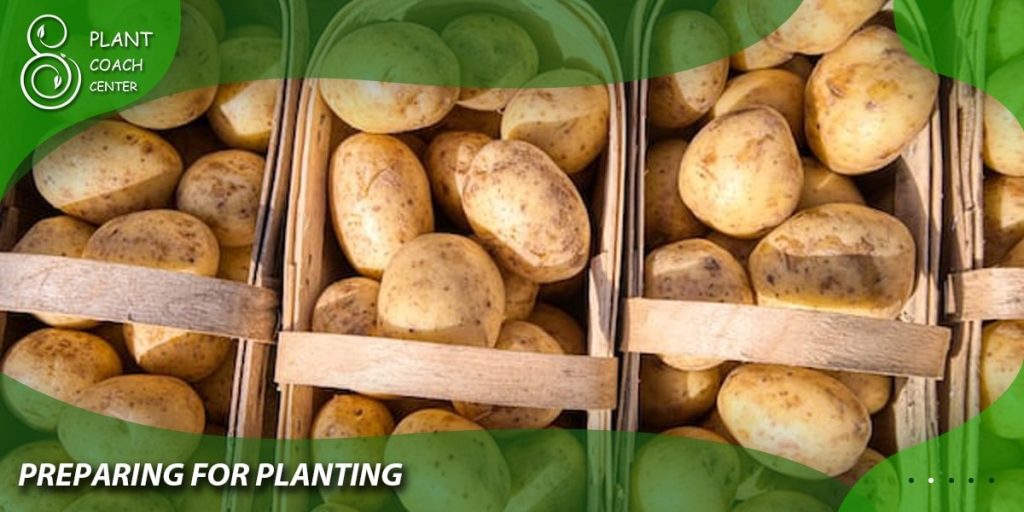
Preparing for Planting
Preparing the soil and selecting the right seed potatoes are crucial steps in ensuring the success of your first early potato crop. Let’s explore these preparatory measures in detail.
- Selecting the Right Seed Potatoes
Choose high-quality seed potatoes from a reputable source. Look for certified disease-free varieties that are specifically labeled as suitable for first early planting.
Inspect the seed potatoes for any signs of damage, decay, or disease. Select tubers that are firm, have several eyes, and are of uniform size. Avoid using grocery store potatoes, as they may carry diseases or have been treated with growth inhibitors.
- Pre-Sprouting or Chitting Potatoes
Pre-sprouting, also known as chitting, is an optional but beneficial technique that promotes early growth and can lead to higher yields. To pre-sprout your seed potatoes:
- Place the potatoes in a cool, well-ventilated area with indirect light.
- Arrange them in a single layer, with the end containing the most eyes facing upward.
- Allow the potatoes to sprout for about 4 to 6 weeks before planting.
Pre-sprouting helps to jumpstart the growth process and can lead to earlier harvests.
- Preparing and Conditioning the Soil
Proper soil preparation is essential for healthy potato growth. Follow these steps to prepare your soil:
- Clear the planting area of any weeds, rocks, or debris.
- Loosen the soil to a depth of at least 8 inches (20 cm) using a garden fork or tiller.
- Incorporate organic matter, such as compost or well-rotted manure, to improve soil structure and fertility.
- Rake the soil surface to create a smooth, level bed for planting.
Remember to perform a soil test to assess its pH level and nutrient content. Adjust the pH as necessary by adding lime to raise it or sulfur to lower it. Aim for a slightly acidic to neutral pH range of 5.8 to 6.5 for optimal potato growth.
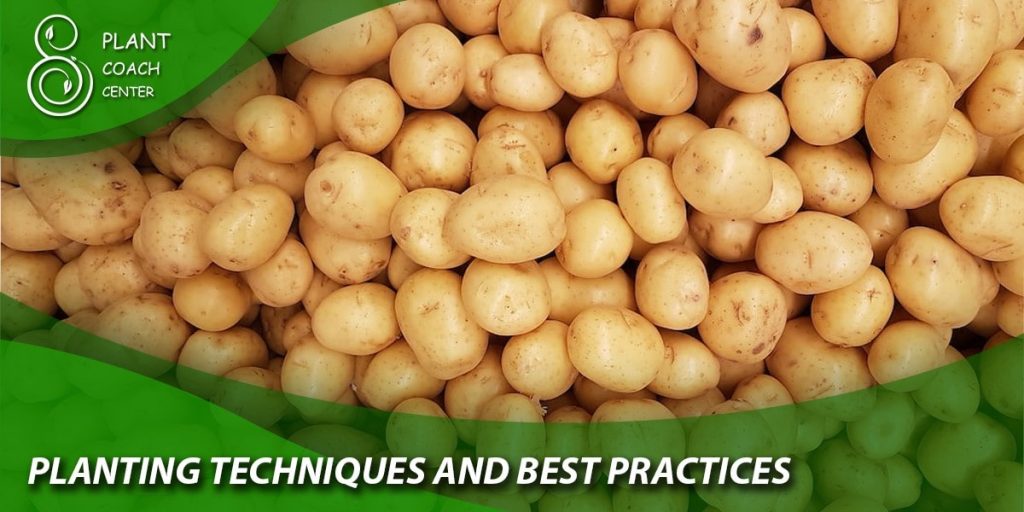
Planting Techniques and Best Practices
Planting first early potatoes requires attention to detail and adherence to proper techniques. By following these planting guidelines and best practices, you can ensure optimal growth and a bountiful harvest.
- Planting Methods
There are several planting methods you can choose from, depending on your available space and preferences:
- Traditional Method: Dig trenches or furrows that are approximately 4 to 6 inches (10 to 15 cm) deep and 2 to 3 feet (60 to 90 cm) apart. Place the seed potatoes in the trenches, spacing them about 12 inches (30 cm) apart, and cover them with soil.
- Raised Beds or Containers: If you have limited space or poor soil conditions, consider planting your potatoes in raised beds or containers. Fill the containers or raised beds with a well-draining, nutrient-rich soil mix. Plant the seed potatoes about 6 inches (15 cm) apart and cover them with soil.
- Planting Depth and Spacing
When planting first early potatoes, it’s essential to maintain the proper planting depth and spacing:
– Plant the seed potatoes with the eyes facing upward.
– Place the seed potatoes at a depth of approximately 4 to 6 inches (10 to 15 cm) in the soil.
– Space the seed potatoes approximately 12 inches (30 cm) apart in rows, or follow the spacing guidelines for containers or raised beds.
- Watering and Mulching
Proper watering is crucial for the growth and development of your first early potatoes. Keep the following points in mind:
– Water the newly planted potatoes thoroughly to settle the soil and encourage root establishment.
– Maintain consistent moisture throughout the growing season, aiming for about 1 to 2 inches (2.5 to 5 cm) of water per week.
– Avoid overwatering, as it can lead to waterlogged soil and rotting tubers.
Mulching is beneficial for moisture retention, weed suppression, and temperature regulation. Apply a layer of organic mulch, such as straw or shredded leaves, around the potato plants once they have emerged.
- Fertilization and Care
To support healthy growth and maximize yields, provide your first early potatoes with proper fertilization and care:
– Prior to planting, incorporate a balanced, slow-release fertilizer into the soil according to the manufacturer’s instructions.
– As the plants grow, side-dress them with nitrogen-rich fertilizer to promote foliage development.
– Monitor the plants regularly for pests and diseases, and take appropriate action if necessary.
– Practice regular weed control, either by hand-pulling or shallow cultivation, taking care not to damage the shallow potato roots.
- Harvesting First Early Potatoes
The exciting moment arrives when it’s time to harvest your first early potatoes. Here’s how to determine when they are ready for harvest:
– First early potatoes are typically ready for harvest 60 to 90 days after planting, depending on the variety and growing conditions.
– Monitor the plants for signs of maturity, such as yellowing foliage and declining growth.
– Gently dig around the base of the plants and harvest a few tubers to check their size and maturity.
– Harvest the potatoes by carefully lifting the plants with a garden fork or by hand. Take care not to damage the tubers during the process.
Enjoy the fruits of your labor by incorporating these delicious first early potatoes into your favorite recipes!
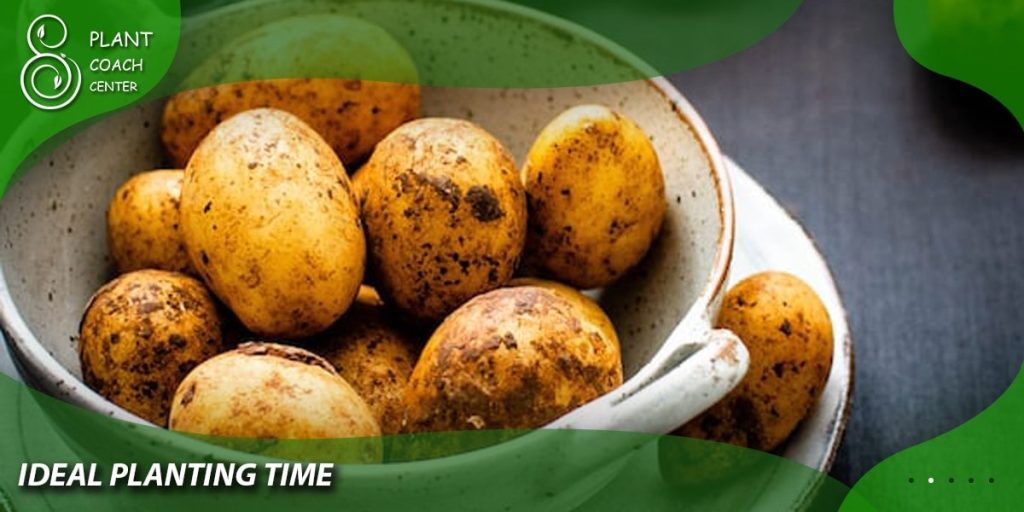
Conclusion
Congratulations! You are now equipped with the knowledge and guidelines necessary to successfully plant and grow first early potatoes. Remember to refer back to this comprehensive guide from PlantCoachCenter.com whenever you need assistance.
By understanding the basics of first early potatoes, determining the ideal planting time, preparing the soil, and following proper planting techniques, you’ll be well on your way to a rewarding potato-growing experience. Enjoy the journey and savor the delectable flavors of your homegrown first early potatoes!
When should I plant first early potatoes?
Early spring.
Can I plant first early potatoes in winter?
No.
Is it better to plant first early potatoes in pots or in the ground?
Either is fine.
How long does it take for first early potatoes to mature?
Around 10-12 weeks.


